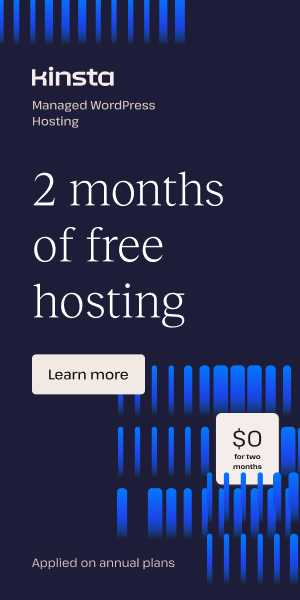Updating Your WordPress Site Post-Figma Conversion
Ensuring Seamless Updates for Your WordPress Site After Conversion
After converting your pixel-perfect Figma designs into a fully functional WordPress site, keeping your website updated and well-maintained is crucial to preserve both its aesthetics and performance. WP updates after conversion involve more than just clicking “update” buttons; they require a strategic approach to ensure design integrity, optimal speed, and functional consistency.
Preserving Your Design with Strategic Maintenance
The transition from Figma to WordPress often results in a custom-built theme or child theme tailored to match your original designs. To safeguard your site’s look and feel during updates, it’s essential to avoid direct edits to parent themes. Instead, maintain a child theme or custom theme that encapsulates your unique visuals. Implementing a staging environment is another best practice — it allows you to test updates, plugin additions, and code changes before pushing them live, preventing any unexpected disruptions.
Regularly backing up your theme files and databases safeguards your work against accidental loss or faulty updates. Many webmasters leverage reliable backup plugins like UpdraftPlus or BackupBuddy to automate this process.
For detailed guidance on maintenance tailored for Figma-to-WordPress sites, services such as the Figma2WP Service offer expert support to keep your site polished and performant without sacrificing design fidelity.
Optimizing Site Performance Post-Conversion
One of the most common challenges after converting Figma designs is bloated or redundant code that can slow down your site. Images exported from design tools are often high resolution and large in file size, which negatively impacts load times. To tackle this, implement image optimization tools like TinyPNG or ShortPixel to compress images without visible quality loss.
Another contributor to slow load speeds is excessive or unoptimized JavaScript and CSS files generated during conversion. Using performance plugins such as Autoptimize or W3 Total Cache can minify and combine these files to reduce HTTP requests and improve initial page load times. Additionally, routinely auditing your site’s plugins helps eliminate unnecessary ones that may introduce heavy scripts and degrade performance.
Speed improvements aren’t just about user experience—they also influence SEO rankings and conversion rates. According to experts, even a one-second delay in load time can reduce conversions by up to 20%, highlighting why wp updates after conversion should prioritize optimization efforts.
Responsive and Cross-Browser Compatibility: Testing is Key
Figma designs are often created with pixel-perfect precision, but post-conversion, your WordPress site must perform flawlessly across different devices and browsers. This means continuous testing on popular browsers such as Chrome, Firefox, and Safari, as well as mobile devices like smartphones and tablets.
To efficiently test responsiveness and browser compatibility:
- Use automated tools like BrowserStack or Sauce Labs to simulate device environments.
- Integrate responsive design testing into your staging environment workflow.
- Collaborate with your design and development teams regularly to address any visual inconsistencies or functional bugs.
Effective Site Editing: A Guide for Post-Figma Conversion Management
Once your site is live, you’ll want the ability to make quick content or design tweaks without jeopardizing the delicate structure set during conversion. Here’s a concise site editing guide specific to WordPress sites built from Figma designs:
- Use the WordPress Customizer and Theme Options: Utilize available live preview features to change colors, typography, or layouts global to your theme without touching code.
- Employ Page Builders Carefully: While plugins like Elementor or Beaver Builder offer flexibility, ensure they complement your custom theme’s structure and don’t override the design’s unique aspects.
- Create Child Themes for Custom CSS Edits: Make CSS adjustments through child themes or custom CSS sections in the WordPress admin panel to avoid losing changes on updates.
- Training and Documentation: Provide your content editors with step-by-step documentation or training on how to update text, images, and other site elements without disrupting layout.
For enterprises or agencies managing multiple sites, centralized editing dashboards via Jetpack or ManageWP can simplify ongoing content management and updates.
Real World Success: A Canadian Startup’s Maintenance Journey
An e-commerce business in Canada that employed Figma2WP’s service to convert their designs discovered the importance of proactive and organized maintenance. They incorporated weekly backups, scheduled automated updates of WordPress core and plugins, and monthly performance audits. Tools like WP Umbrella helped monitor uptimes and speed. Their efforts led to a 30% increase in site speed, better SEO rankings, and a corresponding 25% increase in sales within half a year.
This example illustrates that maintaining a WordPress site after Figma conversion is not simply a technical necessity but a strategic business advantage.
Helpful Tools & Resources for Post-Conversion Management
- Figma2WP Service – Expert conversion and ongoing support tailored to your design needs.
- UpdraftPlus – Reliable scheduling of backups and restoration for WordPress.
- Autoptimize – Site speed optimization through code minification and concatenation.
- TinyPNG – Image file compression to enhance load times without quality loss.
- BrowserStack – Cross-browser and device testing platform.
- Elementor Page Builder – Visual page designing tool with editing flexibility.
Maintaining the Bridge Between Design and Functionality
Keeping your WordPress site in top shape after Figma conversion is an ongoing process blending design maintenance, technical upkeep, and user experience optimization. By nurturing the fidelity of your original Figma design through smart updates, optimizing site speed, and equipping your content teams with proper editing tools and guides, you ensure the success and scalability of your online presence.
Ready to elevate your WordPress site after design conversion? Reach out to Contact Us to explore personalized maintenance plans and expert support that guarantee your site stays fresh, fast, and flawless.
More From Our Blog
Crafting Engaging Media Portals with Effective Article Design Creating a compelling media portal today demands exceptional attention to both aesthetics and functionality. The design of article pages, user navigation, and responsiveness play a decisive role in reader engagement and retention. Especially when it comes to transforming designs from platforms like Figma into fully functional WordPress Read more…
Elevating Your Online Presence Through Engaging Social Design and Community WP Building a vibrant community WP (WordPress) site is increasingly crucial in the digital age for brands aiming to foster trust, loyalty, and dynamic interaction among their customers. By integrating Figma2WP Service solutions, businesses can transform precise figma social design prototypes into powerful WordPress-based discussion Read more…


